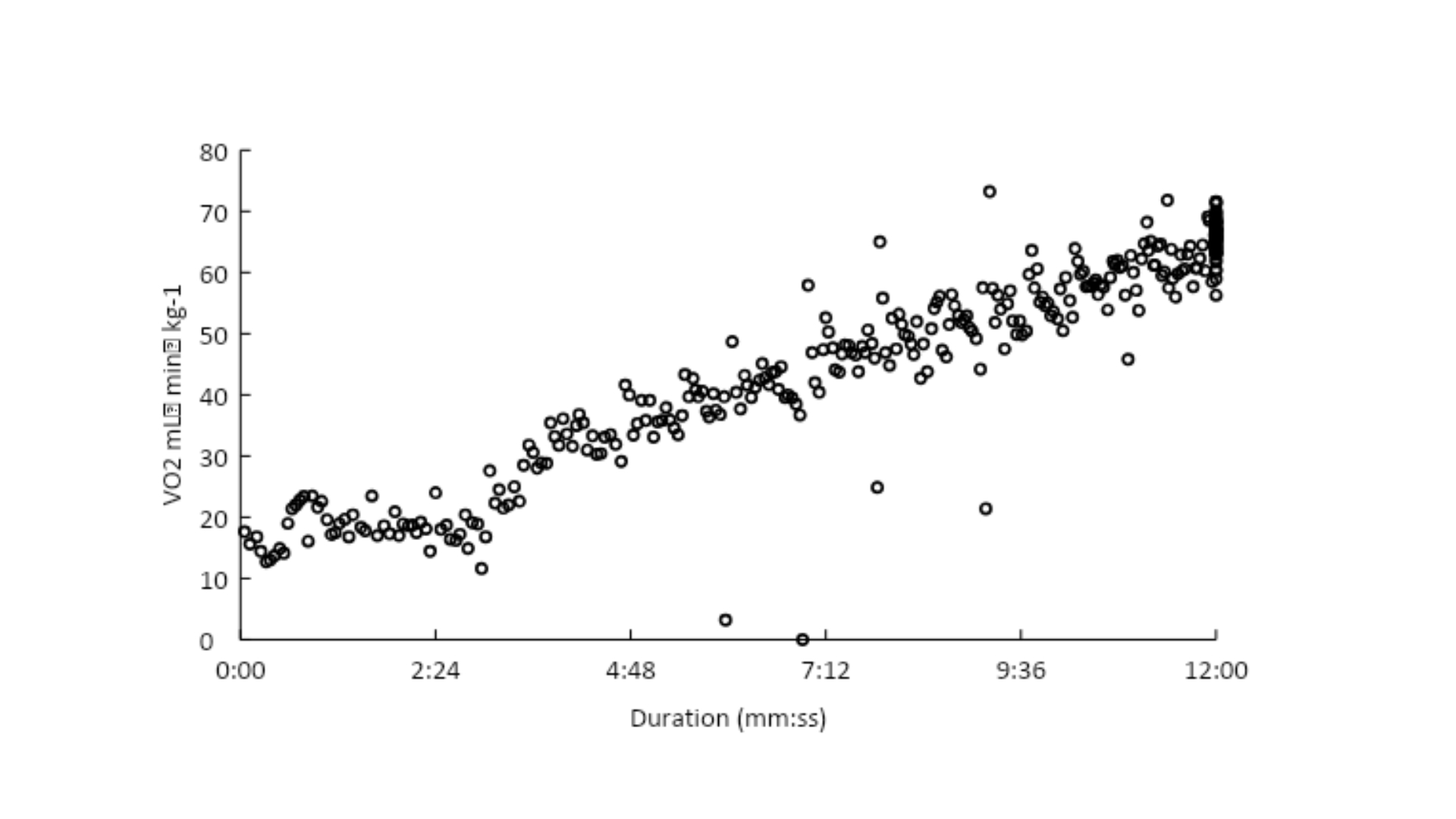Ask a coach: ‘Why does VO2max decrease as you get older?’
Several factors contribute to a decline in VO2max, but the inclusion of specific training can help reduce the rate


VO2max is a term many of us have heard before - but what does it actually measure? And just why does it change? Cycling coach Alex Welburn runs us through the science behind VO2max and the age-related factors which cause it to decline, as well as what can be done to mitigate this.

Performance cycling coach Alex Welburn is one of the experts who will be answering your questions in Cycling Weekly's Ask a Cycling Coach series, online every Wednesday. He's currently completing a PhD on Critical power and W' at Loughborough University whilst also managing the Performance Project, in which he coaches athletes and provides consultation.
Understanding VO2max
VO2max is a measure of your aerobic capacity. It is the maximal amount of oxygen that can be extracted, delivered and utilised by the working muscles. It is either measured in its absolute value, in liters per minute, or its relative measure of mL‧min-1‧kg-1 which takes into account your body mass.
From a performance point of view, it sets the upper limit for endurance performance - anything above 100% is unsustainable for a prolonged period of time. This is often referred to as a key performance marker, but there are a few more elements to it - such as what percentage of your VO2max does Critical Power/FTP occupy? But that’s beyond the scope of this piece.
A quick little science nugget is that in research and as a physiologist, we denote the V with a dot above it, as it indicates a volume per unit of time, thus it is V̇O2max. Often I see the mistake of a zero 0 being used instead of an O, for oxygen.
Measuring your VO2max
Typically speaking, we measure VO2 Max directly where possible. Nowadays, we have an online breath-by-breath system, which measures what you inhale vs. exhale. Often, the physiology laboratory will have large bags called Douglas bags which you breathe into via a mouthpiece and a tube. These fill up with the collected air, and then it is extracted and calculated. Nowadays, the preference is to use the breath-by-breath system.

Here is the output of the VO2max assessment on an athlete. This is the raw breath-by-breath data, which as you can see, has a bit of noise. Normally we would average this over 5s to reduce this. This assessment started at 150 W with an increase of 25 W every minute. This person had a VO2max of 70 mL⋅ min⋅ kg-1, which was calculated by taking the highest 60s average.
What determines VO2max?
Aside from the genetic element (which supposedly accounts for around 50%) there are a variety of physiological components. It amalgamates into this equation as these determining elements:
The latest race content, interviews, features, reviews and expert buying guides, direct to your inbox!
VO2max = Stroke Volume Heart Rate (a – vO2 diff)
(a – vO2 diff) is called the ‘arteriovenous oxygen difference’. Simply put, it’s the difference in the oxygen content of the blood between the arteries and the veins - and it indicates how much oxygen is removed from the blood in the capillaries as the blood circulates.
When we exercise there is an oxygen demand. When we breathe in, O2 (oxygen) is extracted from the air in our lungs. As it makes contact with the alveoli (the small air sacs inside our lungs), this oxygenated blood is carried to the heart where it is pumped around to where it needs to be delivered.
Then, it is extracted through capillaries which surround type 1 muscle fibres (also known as slow twitch). This is a very short version - quite a few processes are actually going on between acquiring, extraction and delivery.
Why does it decline?
Research suggests that after the age of 25, there is around a 10% decline per decade and around 15% decline between the ages of 50 and 75.
One of the reasons is a decline in max heart rate and potentially stroke volume; with both being key components to the above equations this would make sense. As we age, we will have some muscular changes including a reduction in lean muscle mass. This loss results in a reduction in capillaries and thus our ability to extract oxygen, leading to a lower VO2max.
Mitigating the decline
While there is a natural decline, which unfortunately is going to happen, we can reduce the rate of this through appropriate training. Research suggests that the decline rate could be halved, demonstrating that training at VO2max is vitally important. To determine exactly what your value is, you can have it tested at a physiology lab - or you can use your 5-minute max power as a rough proxy.
Training methods
One of the aims of training at VO2max is to spend time close to it, ideally above 90-95%. However, there is a little caveat to this, meaning it is not quite as straightforward as spending 5 x 3 minutes at around 95-100% of your 5-minute power will not equate to spending 15 minutes in this range. It is actually more like 9 minutes.
This is because of something called ‘VO2 kinetics’. Simply put, this is the time it takes for the body to respond to the oxygen demand. There is a lag period, which is why a warmup is important, so you are physiologically ready for the season. One suggestion is a ‘hard start’ where you will go a little over target for the first 15-20 seconds to speed up the kinetics before settling down. The main thing is to ensure that these are completable and over time you can progress them.
Another idea is to come up with a training that has a series of climbs or segments where you can fit in this style of session. It doesn’t have to be 3 minutes, it could be 4 or 5, you just adjust the power accordingly.
The above is a constant work rate session. The other common method is a burst-style effort, such as 20 seconds on and 10 seconds off over 5-10 minutes with equal recovery. These can be a nice alternative, especially if you race criterium, as it adds some specificity to your training as well. Try both, but as there are high-intensity sessions there can be a fair amount of fatigue with it, so ensure you fuel well after these and that they fit into your training goals.
Collectively, several factors contribute to a decline in VO2max, but the inclusion of some specific training can help reduce the decline.
Alex is a Physiologist, Performance Coach, who also lectures occasionally at Loughborough
University where he is completing his PhD in Critical power and W'.
After competing for over 10 years on the bike, where he has competed for GB in both
cyclocross and mountain bike events, he now spends his spare time in the mountains as an
aspiring guide. Alex has worked with cyclists of all levels over the last 9 years, from ultra-
endurance world champions to the Women’s TDF. Supporting his PhD he manages The
Performance Project, consulting with and coaching athletes. Finally, he is also a proud
sponsor of southern based LAKA X Pedal Mafia Race Team.